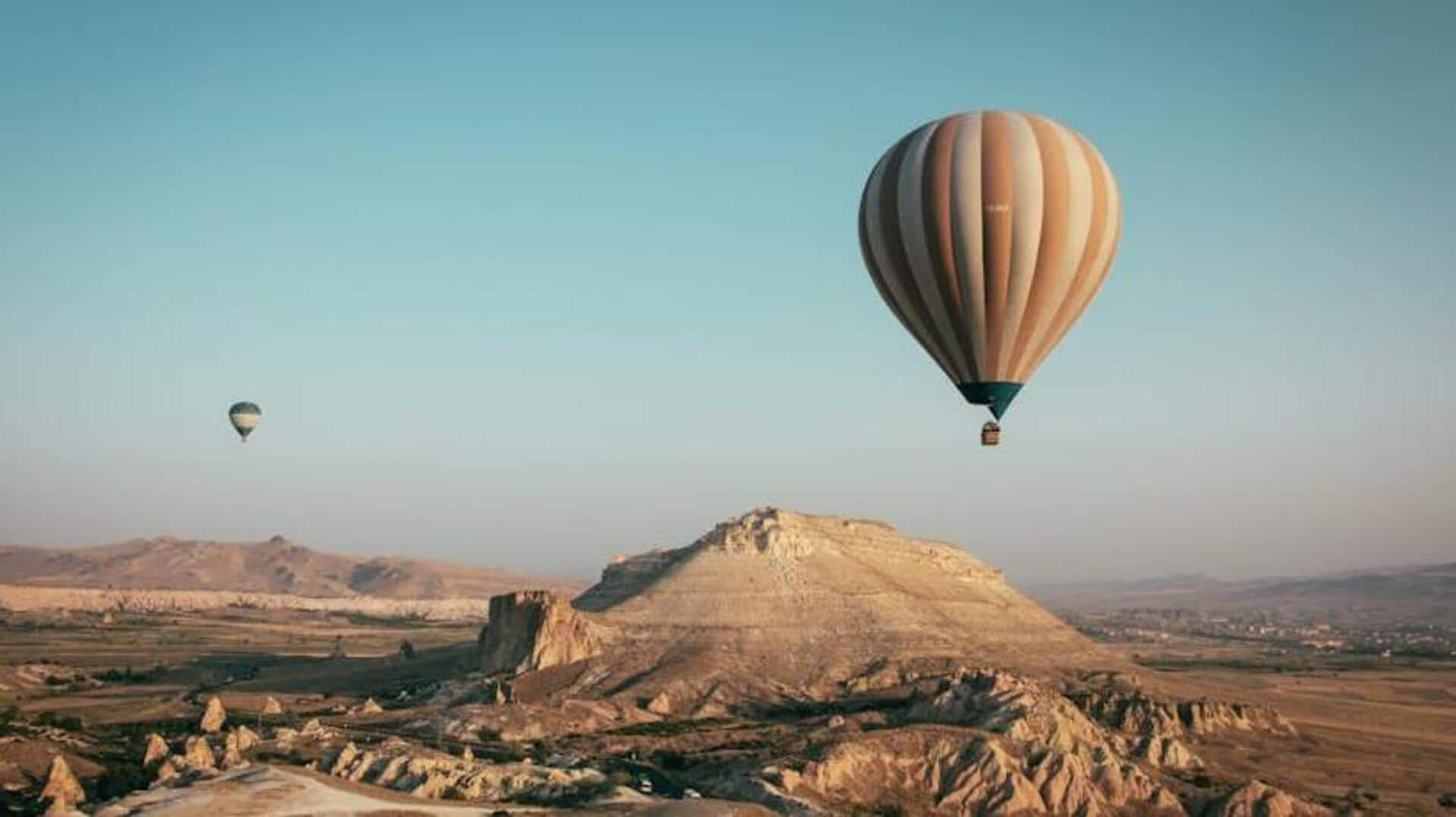
Hot air balloon adventure in Cappadocia, Turkey: A guide
What's the story
Cappadocia, nestled in the heart of Turkey, is celebrated for its extraordinary geological formations, ancient cave dwellings, and rich historical sites.
The region's otherworldly landscape makes it a premier destination for hot air ballooning.
This activity provides unparalleled views of the valleys, fairy chimneys, and the stunning sunrise that illuminates the sky in a spectrum of colors.
Preparation
Planning your balloon ride
Booking your hot air balloon ride in advance is crucial, as spots fill up quickly due to the popularity of this activity in Cappadocia.
Most flights take place at sunrise, when the winds are calmest and the light is ideal for photography.
It's recommended to schedule your flight at the beginning of your trip to allow for any weather-related rescheduling.
Experience
What to expect on your flight
Your adventure begins before dawn as you're taken to the launch site.
Here, you'll watch the balloons being inflated before boarding.
As you ascend, prepare for awe-inspiring views of Cappadocia's landscapes below.
Flights typically last about an hour and end with a gentle landing, followed by a small celebration with your flight crew and fellow passengers.
Beyond ballooning
Exploring more of Cappadocia
Beyond the thrill of hot air ballooning, Cappadocia has much more to offer.
You can visit the Goreme Open Air Museum to explore ancient cave churches. Alternatively, delve into underground cities like Derinkuyu or Kaymakli.
For hiking enthusiasts, trails through Rose Valley or Ihlara Valley provide scenic views and opportunities to discover hidden churches, enriching your experience in this unique region.
Responsibility
Sustainable travel tips
As tourism in Cappadocia increases, embracing responsible travel becomes crucial.
Visitors should respect local customs and heritage sites during their stay.
Opting for eco-friendly accommodations is recommended, as is supporting local artisans by purchasing authentic handicrafts for souvenirs.
Such practices ensure the preservation of Cappadocia's unique beauty for future generations, making responsible travel essential for sustainable tourism in this region.